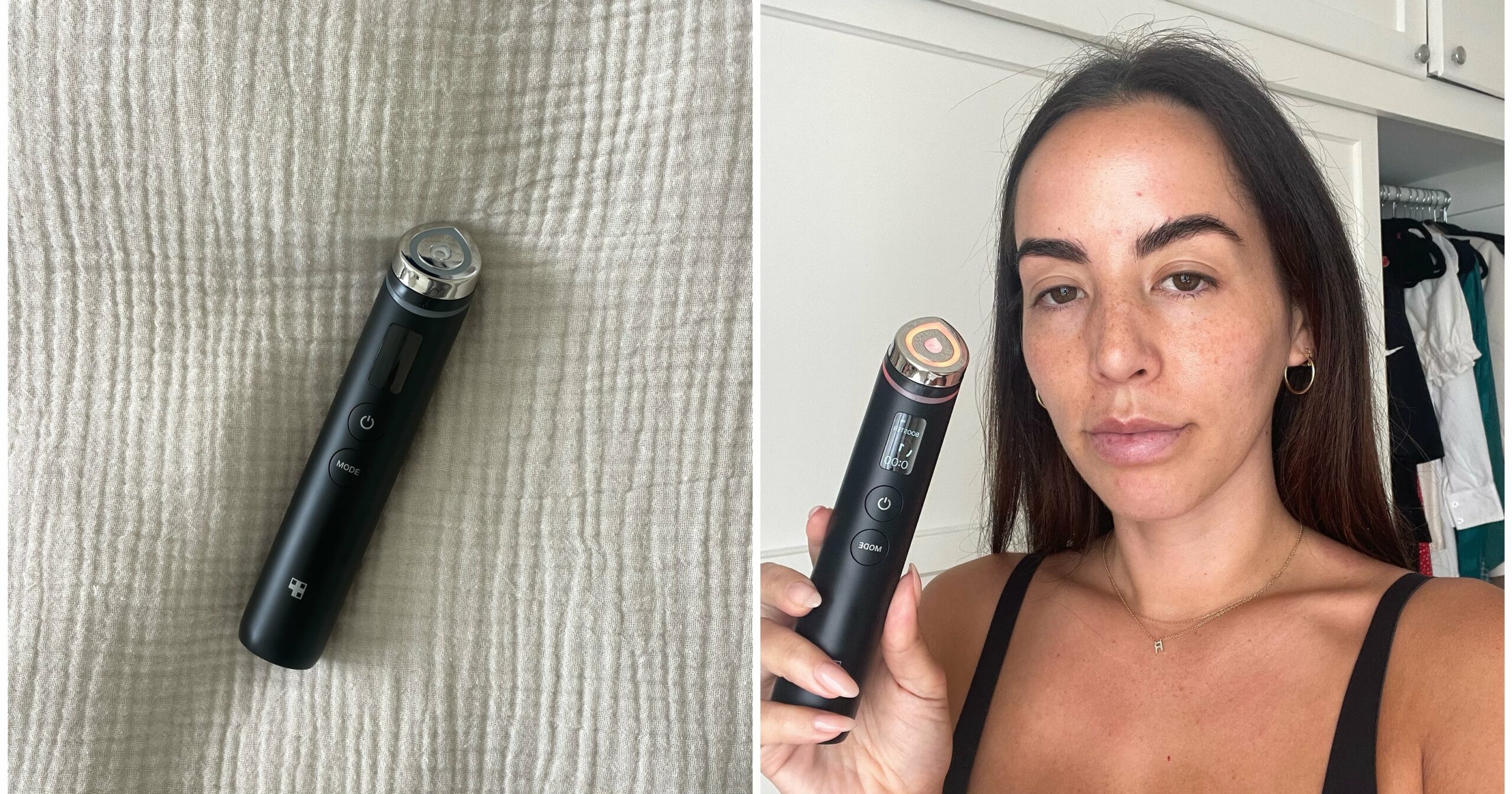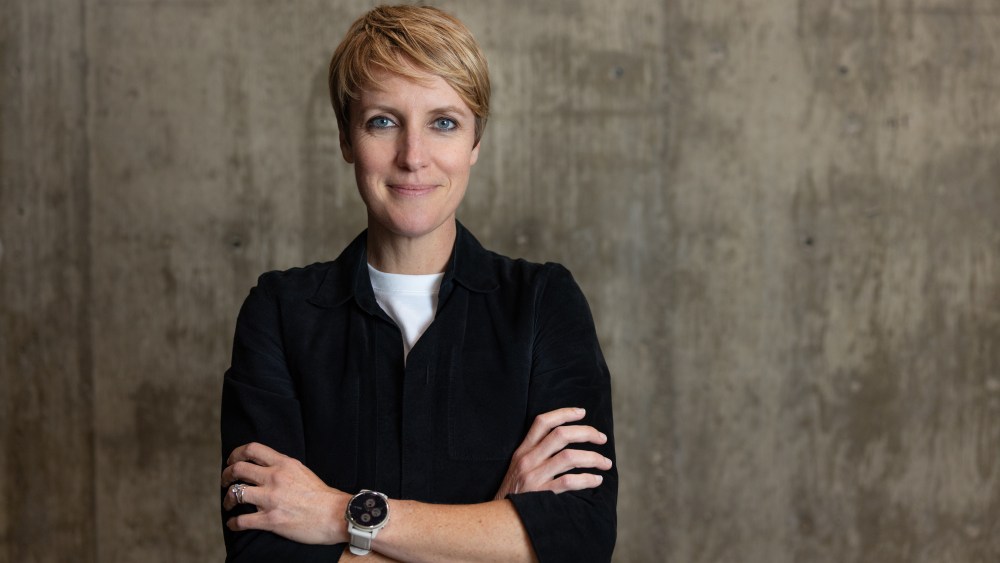My breasts sprouted to 34DDs when I was just 14 and were enormous compared to the rest of my body, which remains gangly and coltish, even in my 30s. Physically, I was hurting; my shoulders, permanently red and divotted from years of straps digging into my skin, ached every time I hooked another bra on. My back was sore from hunching over and supporting the weight on my chest. Working out was out of the question without a sports bra (or two) that bordered on binding.
The psychological side effects were somehow worse. Nothing fit right, which was a mindfuck. I hated shopping, especially for swimsuits or underwear. I started covering up and trying to hide my breasts with extra-large clothes because anything else – even T-shirts or sweaters – looked inadvertently provocative. The unwanted attention from men and demands to “cover up” from older women in my teens was enough to send anyone to therapy for life.
By 25, I was done with my boobs and desperate to get them off me. I scheduled a consult with my plastic surgeon in New Jersey, who confirmed that I was definitely a candidate for a reduction, but explained that he’d need to confirm I was eligible for coverage with my insurance. They told him, despite his expert opinion, that I was not.
Devastated, I appealed my insurance’s decision, but in order to do so, I’d need to demonstrate that I absolutely needed a reduction for my health. And so began a six-month journey of proving that conservative care – physical therapy, chiropractic appointments, advice from my ob-gyn – wasn’t enough to cope with my large breasts. Surgical intervention needed to happen.
Thankfully, the appeal worked. After months of jumping through hoops and getting second opinions just to confirm what I already knew, I was finally granted coverage for a medically necessary reduction. A few weeks later, I had the surgery, and it completely changed my life and health for the better. Six years later, I have no regrets about the operation. But I still find myself asking: why is it so hard to get a medically necessary procedure covered in the first place?
When Relief Comes With Receipts, Referrals, and Resistance
I’m not the only one who’s had to hold their breath while navigating the insurance industry’s maze of red tape to treat macromastia, the medical term for overly large breasts.
An estimated 90,000 breast reductions are performed in the U.S. every year, but research shows insurance denials have increased over the last decade. According to data from the American Society of Plastic Surgery (ASPS), denial rates rose from 18 percent in 2012 to 41 percent in 2017. For comparison, in 2023, HealthCare.gov insurers denied nearly 1 in 5 in-network claims for all types of services, while 37 percent of out-of-network claims were denied.
The ins and outs of each denial vary, as does the list of requirements for a reduction to be deemed “worthy” of insurance. Common reasons patients are turned down are fairly subjective and include inadequate documentation of noninvasive treatment, not meeting the insurer’s minimum for tissue removal, and having a breast-to-body ratio that doesn’t align with a decades-old chart called the Schnur Scale. Developed in the 1990s, the scale uses a person’s height and weight to calculate how much tissue must be removed for the surgery to be considered “medically necessary” – a threshold that, if not met, often leads insurers to categorize the procedure as cosmetic, regardless of symptoms like chronic pain or limited mobility.
In many cases, patients who are denied off the bat are given a chance to appeal, like I did, but even this is confusing and tedious to deal with. Some insurance agencies (like mine) require historical documentation that the patient has exhausted all of their conservative care options (aka, nonsurgical interventions, like PT or chiropractic visits).
“I did everything they told me to do. It still wasn’t enough.”
Shauna Faulisi, 36, a celebrity wellness chef based in New York, had F-cup breasts. She had been considering a breast reduction for about 10 years to alleviate her back pain before pursuing surgery in December 2022. Being self-employed, Faulisi decided to splurge on a PPO (preferred provider organization) insurance plan specifically to increase her chances of getting her breast reduction surgery covered by insurance with her preferred surgeon.
Despite having documentation from three different specialists – her plastic surgeon, a chiropractor, and her primary care physician – Faulisi was initially denied coverage through that PPO. But she and her doctor were quick to appeal with a peer-to-peer review, which entailed a scheduled conversation between her surgeon and someone (sometimes a doctor, other times a healthcare director) from the insurance agency.
Faulisi’s experience highlights the importance of having a medical team willing to advocate for patients, but sometimes, that isn’t even enough. The insurance process can be so subjective, time-consuming, and straight-up confusing that some patients proceed with surgery under the impression that it’s covered – only to get stuck with a huge bill after the surgery is complete.
That’s what happened to Megi Haydon, 34, of Santa Barbara, CA. Plagued by chronic back pain, limited mobility, and breasts so large they eclipsed her pregnant belly, Haydon knew a breast reduction wasn’t just about aesthetics – it was about getting her body back. She spoke to friends who’d had the surgery, compiled years of medical records from her ob-gyn and primary care doctors, and waited until after breastfeeding her children to move forward with the reduction. She even found a surgeon in New York who was well versed in navigating insurance red tape and called her provider directly multiple times to confirm pre-approval.
“I talked to insurance and they said, ‘You need to get pre-approval and then afterwards, [when the doctor completes the surgery and files the paperwork], you would get reimbursed after you met your minimum,'” she explains. “[My doctor and team] applied for my pre-approval. They got it pre-approved.” Knowing she’d get at least some of her money back, Haydon decided to move forward with the procedure and traveled alone all the way from California to New York to get her reduction. In the end, her insurance paid just about $200 for medication. The rest? A staggering $24,000 out of pocket.
Confused, Haydon called her insurance provider, who told her that just because she had been pre-approved didn’t mean she’d be covered by insurance. “There’s another approval needed for the actual surgery that I was never told that I needed,” Haydon says. Frustrated, she appealed, which was then denied. “I did everything they told me to do. It still wasn’t enough.”
Despite it all, she says the surgery, which brought her from a 34H to a C cup, was the best decision she’s made. But the experience left her with lingering frustration at a system that seems designed to say no, no matter how much evidence you present. And it’s why some women end up skipping the insurance run-around altogether and just paying out of pocket.
Katie J., 28, a media strategist based in New York, paid for her own reduction in November 2024. “I was too motivated to get it done,” she said. “I didn’t want to wait around to maybe be told no.”
So she paid around $10,000 out of pocket back in her hometown of Memphis, TN, to bring her DDD/F cups to approximately a B-C cup. She has no regrets and encourages other women debating the procedure to do it, if they can afford it. “It’s not selfish or silly to want smaller boobs for the sake of feeling more comfortable in your own body,” Katie says. “If the cards are in your favor, paying for this level of better mental health is kind of priceless. You can’t really put a price on that.”
Except you can. According to the ASPS, the average surgeon’s fee for aesthetic breast reduction is $7,800. This figure doesn’t include other expenses, like facility fees and anesthesia. Like everything else, prices vary regionally around the U.S. I spoke to one woman whose entire surgery cost $47,000 in midtown Manhattan (which was luckily entirely covered by her health insurance). But for a medically necessary procedure that’s meant to alleviate chronic pain, improve mobility, and drastically enhance quality of life, having to pay anything at all out of pocket feels absurd. And yet, that’s the reality for many patients, especially those whose insurance deems their symptoms insufficient, their body proportions unconvincing, or their documentation incomplete.
Why Is the Breast Reduction Process So Hard?
Stephanie Cohen, MD, a board-certified plastic surgeon affiliated with Hackensack Meridian Health in Maywood, NJ, has performed hundreds of cosmetic and reconstructive breast surgeries, including reductions. Affectionately called the “Breast Whisperer” by her colleagues, Dr. Cohen theorizes a number of reasons why proving medical necessity can be such a hassle: a patriarchal system, misogynistic misconceptions that women want larger boobs, and people who don’t understand the medical complexities of macromastia.
“Nobody denies that if you have a ruptured gallbladder, you need to have it operated on.”
“Nobody denies that if you have a ruptured gallbladder, you need to have it operated on,” she says. Rarely do people apply that logic to breast reductions. “Anybody who has had larger breasts can understand that it’s something that really is a medical problem,” Dr. Cohen says. “But you have to get somebody to understand it.”
But shouldn’t the medical opinion of a surgeon be enough? Rukimi Rednam, aka “The Confidence Doc,” who is based in Houston, certainly thinks so. But because coverage is ultimately up to the insurance agencies, the power is stripped out of the hands of the experts. “Even if I write a letter and I say it’s medically necessary and provide all this support, I’ve still had people who have not been approved,” she says.
Given the Hurdles, Is a Breast Reduction Still Worth It?
In every conversation I had for this story, one thing was clear: breast reduction surgery is life-changing. Doctors told me their patients’ physical and mental health improved almost immediately, and studies back that up – one 10-year retrospective study found that over 95 percent of patients were satisfied with their results and would do it again. Nearly every woman I spoke to echoed this sentiment and said they wished they’d done it sooner. I feel the same way – my breast reduction was one of the best things I’ve ever done. Compared to my DD cups, my newish C-cups have made my life so much better in so many ways.
So is it worth the hassle of going through insurance? If it’s the only way you can afford a reduction, then undeniably yes – just start doing your homework now. Ahead, a few tips from the experts:
- The moment you start having issues, go to your primary care doctor for treatment ASAP: “It sometimes means more visits and sometimes means taking the extra time out [from work], but it is worthwhile to do it because then you have those records to prove medical necessity,” Dr. Rednam says.
- Document everything: Take note of all of pain relief prescriptions, even if it’s just for over-the-counter Advil for neck pain. Record a video of bra straps digging into your shoulders and leaving behind red, tender divots. Take photos of rashes or infections under the breast. “Don’t underplay it when you’re having issues. Go and talk to your provider so you can get that documentation – then you’re going to make your case the strongest you can make it,” Dr. Rednam says.
- Speak with a plastic surgeon early, too: “Every office approaches it [insurance] a bit differently based on, probably, what [companies] they’ve had success with in the past,” Dr. Rednam says. Your PCP and gyno can provide conservative treatment, but they’re not the experts in dealing with the ins and outs of insurance. “Talk to a plastic surgeon and find out what they recommend their process is,” she adds.
- Ask your insurance for its criteria for proving medical necessity: These should be explicitly listed for every insurance agency. Once you have the criteria, follow it precisely, down to the very letter, so there’s no chance of denial. “With the Transparency in Insurance Act, insurance companies have to provide you with that criteria,” Dr. Cohen says. This is where doctors can help advocate for their patients: “A lot of people don’t know how to call their insurance to ask for criteria,” says Dr. Cohen. “We, as the plastic surgeons, can help them do that.”
My biggest piece of advice: don’t wait. I wish I had done my breast reduction years before. So did most of the women I spoke with for this story, and the vast majority of patients who walk into Dr. Rednam’s and Dr. Cohen’s offices. “I tell my staff that when I retire, all I’m going to do is breast reductions,” says Dr. Cohen. “They are the simplest way to change somebody’s complete life in four hours.”
Francesca Krempa (she/her) is a freelance writer who splits her time between Salt Lake City and New York City. She earned a bachelor’s degree in communications from the University of Kentucky and a master’s degree in journalism from CUNY’s Craig Newmark Graduate School of Journalism, where she specialized in health and science reporting. She was previously the commerce editor at Well+Good, where she tested and covered the latest wellness products, including fitness, beauty, travel, style, and more.




